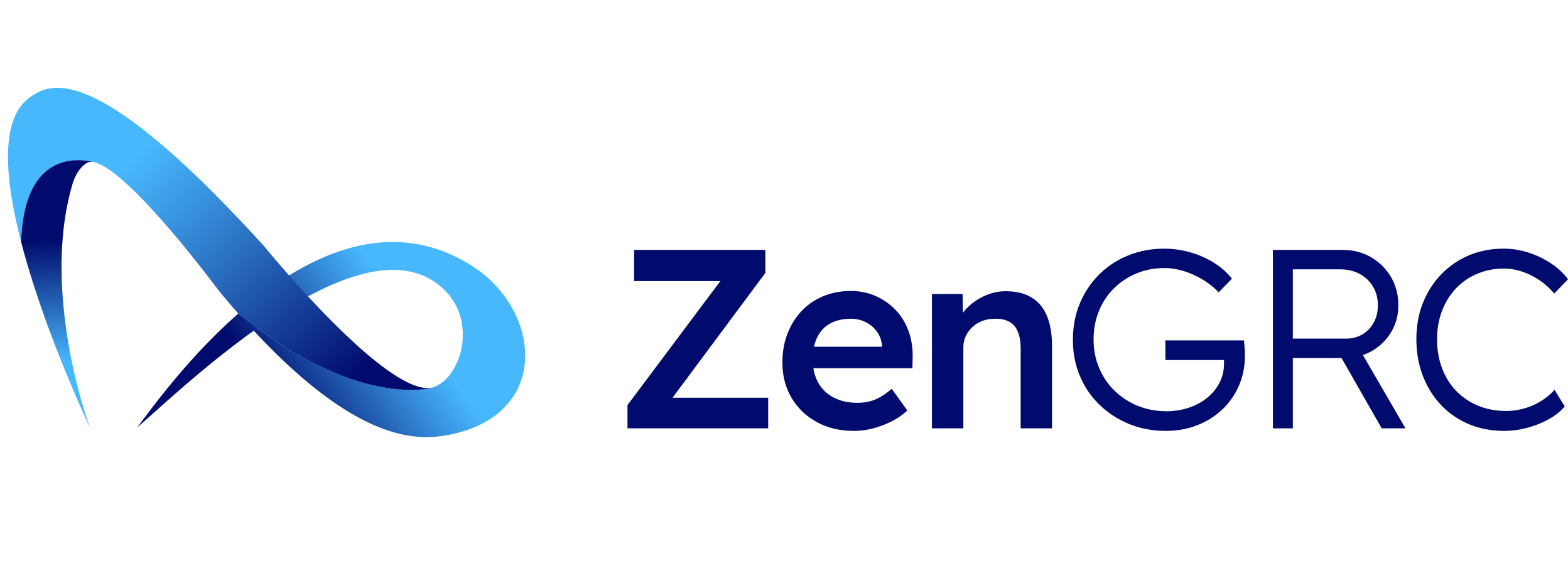
What Is NIST in Cloud Computing?
Key Takeaway: NIST provides comprehensive cloud computing frameworks through Special Publication 800-145. It defines cloud computing as on-demand network access to shared computing resources with five essential characteristics, three service models, and four deployment models.
Quick Navigation
- What Is Cloud Computing?
- NIST Cloud Computing Definition
- Five Essential Characteristics
- Three Service Models
- Four Deployment Models
- NIST Cloud Security Standards
- Frequently Asked Questions
Key Terms
Cloud Computing: A model for enabling ubiquitous, on-demand network access to shared computing resources that can be rapidly provisioned and released.
NIST SP 800-145: NIST Special Publication that provides the definitive framework and definition for cloud computing standards and models.
Multi-Tenancy: A cloud architecture where multiple customers share the same computing resources, while maintaining data isolation and security.
Elasticity: The ability of cloud services to automatically scale computing resources up or down based on demand and workload requirements.
Cloud Service Provider (CSP): An organization that provides cloud computing platforms, infrastructure, applications, or storage services to other organizations or individuals.
NIST and Cloud Computing
Cloud computing security risks are everywhere in modern business environments, and they require structured guidance for effective risk management. The National Institute of Standards and Technology (NIST) provides comprehensive frameworks to help organizations manage cloud computing risks and implementation challenges.
Experience Signal: Organizations following NIST cloud computing guidelines reduce security incidents by up to 40% and achieve 30% better compliance outcomes compared to those using ad-hoc cloud implementation approaches.
What Is Cloud Computing?
Cloud computing is distributed computing where IT hardware, software, and processes exist in different physical locations and connecting and communicating through the Internet. The term was coined in 1996 by Compaq, though the concept originated in the 1950s with mainframe computer systems.
Modern cloud computing supports on-demand delivery of computing power, storage, networking, databases, and applications by hosting platforms, databases, and software remotely for user access from any Internet-connected device.
Key Benefits of Cloud Computing
Primary Cloud Computing Advantages
- Scalability: Infrastructure easily scales up or down to meet fluctuating business demands without hardware investment
- Lower Costs: Pay-as-you-go models help control IT costs by charging only for used resources and eliminate equipment purchases
- Multiple Storage Options: Choose from public, private, or hybrid cloud storage based on specific requirements and security needs
- Enhanced Data Security: Advanced security features including granular permissions, authentication, encryption, and virtual private clouds
- Flexible Control Options: Various “as-a-service” models (SaaS, IaaS, PaaS) provide different levels of organizational control
- Improved Accessibility: Access applications and data from any location, time, and Internet-connected device
NIST’s Cloud Computing Definition and Model
Official NIST Definition (SP 800-145):
“A model for enabling ubiquitous, convenient, on-demand network access to a shared pool of configurable computing resources (e.g., networks, servers, storage, applications, and services) that can be rapidly provisioned and released with minimal management effort or service provider interaction.”
NIST’s comprehensive cloud model consists of three core components that define cloud computing architecture and implementation standards. This structured approach helps organizations evaluate and compare various cloud services and deployment models effectively.
The NIST cloud computing framework includes five essential characteristics, three service models, and four deployment models. This standardization enables businesses to make informed decisions about cloud investments, while implementing robust security controls and compliance best practices.
NIST’s Five Essential Characteristics of Cloud Computing
The five essential characteristics create the foundation of cloud computing infrastructure through physical hardware layers and software abstraction layers.
1. On-Demand Self-Service
Users acquire services independently without IT departments or call centers. Cloud providers must offer automated interfaces (web portals, mobile apps) accessible anytime with user-controlled service cancellation capabilities.
2. Broad Network Access
Cloud services must be broadly available over communication networks. Users should be able to access services from any location using Internet-enabled devices including laptops, tablets, smartphones, and desktop computers.
3. Resource Pooling
Multiple customers share cloud service resources in multi-tenancy models. While this raises privacy and security concerns, proper security precautions enable safe data and asset protection across shared infrastructure.
4. Rapid Elasticity
Cloud services automatically scale up or down to meet user needs. This flexibility provides appropriate processing power, memory, network bandwidth, and storage to accommodate varying workloads dynamically.
5. Measured Service
Metering capabilities underpin pay-as-you-go pricing models. This measurement provides users with greater transparency and control over cloud costs through detailed usage tracking and billing.
The Three NIST Cloud Service Models
NIST identifies three distinct cloud service provider categories that determine the level of control and management responsibility.
| Service Model | Provider Responsibilities | User Responsibilities | Popular Examples |
| Software-as-a-Service (SaaS) | Software, infrastructure, maintenance, data centers | User access, data input, basic configuration | Salesforce, Microsoft 365, Google Workspace, Dropbox |
| Platform-as-a-Service (PaaS) | Development platform, infrastructure, runtime environment | Application development, deployment, data management | AWS Elastic Beanstalk, Google App Engine, Microsoft Azure |
| Infrastructure-as-a-Service (IaaS) | Hardware infrastructure, networking, storage | Operating systems, applications, security configuration | AWS EC2, Google Compute Engine, Microsoft Azure VMs |
How Do Organizations Choose the Right Service Model?
Selecting a service model depends on organizational technical expertise, control requirements, and business objectives. SaaS provides maximum convenience with minimal management, PaaS offers development flexibility, and IaaS delivers infrastructure control with operational responsibility.
Many organizations use multiple service models simultaneously to optimize different business functions. For example, companies might use SaaS for productivity applications, PaaS for custom development, and IaaS for specialized infrastructure requirements.
The Four NIST Cloud Deployment Models
NIST defines four cloud deployment models to represent different types of cloud environments with varying features and capabilities.
1. Private Cloud
Single-tenant environment provisioned by a single organization. Offers maximum security with data accessible only to authorized users, making it ideal for HIPAA or PCI DSS compliance requirements. Providers include VMware, Dell, Oracle, IBM, Adobe Creative Cloud, and Dropbox.
2. Public Cloud
Multi-tenant deployment where cloud service providers own and operate the infrastructure. Multiple customers share underlying resources on a pay-as-you-use basis. Top providers include AWS (31% market share), Microsoft Azure (24%), and Google Cloud (11%).
3. Hybrid Cloud
Infrastructure that combines two or more distinct public or private clouds with technology supporting data and application portability. Provides greater flexibility, portability, and scalability than single-model deployments. Examples include AWS VPC, EMC, BMC, and NetApp.
4. Community Cloud
Multi-tenant platform for organizations with shared concerns or collaboration needs. Common in government, healthcare, and education sectors for customer service, partner management, and collaborative research projects.
Why Are NIST Cloud Security Standards Important?
NIST’s comprehensive cloud computing definition enables organizations to evaluate and compare cloud services and deployment models more effectively. Understanding these standards helps businesses implement robust security controls and compliance best practices.
Adhering to NIST cloud security guidelines is crucial for organizations in regulated industries, particularly federal agencies where information security and risk management are paramount. Thorough security risk assessments and strong access control measures fortify information systems against vulnerabilities.
How Do NIST Guidelines Support Compliance and Security?
NIST guidance ensures compliance with regulations including Federal Risk and Authorization Management Program (FedRAMP) and Federal Information Security Management Act (FISMA). Organizations can establish comprehensive incident response protocols and foster continuous improvement cultures.
NIST frameworks extend beyond compliance to enable comprehensive incident response protocols and continuous improvement adoption. The NIST Cybersecurity Framework (CSF) has five core functions: identify, protect, detect, respond, and recover for strategic cybersecurity practices.
Steps to Implement NIST Cloud Security
- Assess Risk: Conduct thorough risk assessments to identify vulnerabilities and implement appropriate security controls based on organizational requirements and regulatory mandates.
- Establish Access Control: Implement strong access control measures including multi-factor authentication, least privilege principles, and comprehensive user identity management systems.
- Plan Incident Response: Develop comprehensive incident response protocols with clear procedures, communication plans, and recovery strategies for various security scenarios.
- Continuous Monitoring: Create ongoing monitoring processes for security controls effectiveness, compliance status, and emerging threats requiring attention and response.
Frequently Asked Questions
What are the core NIST cybersecurity functions? The NIST Cybersecurity Framework outlines five core functions: identify, protect, detect, respond, and recover. These functions provide a strategic view of organizational cybersecurity practices and enable effective risk management across all operations.
What does the NIST cloud security framework cover? NIST’s cloud security framework provides comprehensive guidance on risk assessment, access control, data protection, incident response, and continuous monitoring for cloud computing environments for robust security implementation.
How do NIST guidelines affect cloud computing security? NIST guidelines are a valuable reference for organizations adopting cloud solutions. Following NIST best practices helps businesses implement strong security controls, maintain regulatory compliance, and establish effective risk management in cloud environments.
What are the main components of NIST’s cloud security model? The NIST cloud security model includes security controls, risk assessment methodologies, incident response plans, and continuous monitoring processes. Together, these components create a holistic approach to comprehensive cloud security management.
How can organizations implement NIST cloud security standards? Organizations implement NIST standards by conducting thorough risk assessments, establishing strong access controls, developing incident response protocols, and adopting the NIST Cybersecurity Framework. Regular security audits and employee training are essential for effective implementation.
Which cloud deployment model is most secure according to NIST? Private clouds generally have the highest security due to single-tenant architecture and dedicated resources. However, security depends more on proper implementation of controls and monitoring rather than deployment model choice. Public clouds can be equally secure with appropriate configurations.
Streamline Compliance Management with Integrated GRC Solutions
Comprehensive GRC platforms streamline evidence and audit management for all compliance frameworks, including NIST or SOC 2. Modern solutions help strengthen security posture and cloud compliance through comprehensive control environment visibility.
Advanced platforms provide complete views of control environments and relevant compliance information. This enables organizations to evaluate risks, close gaps, and ensure business systems and data remain secure throughout cloud implementations.
Modern organizations can transition from “check-the-box” compliance to compliance-driven cybersecurity with automated tools that support the NIST framework and ongoing cloud security management.
Are you ready to implement NIST cloud computing standards with automated compliance management and security monitoring? Schedule a demo.
